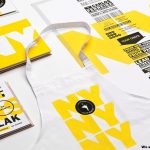 As mobile responsiveness continues to advance, it is quickly becoming the principal approach to reaching customers digitally. Kind kits are becoming much more economical (or cost-free in the case of Google Fonts) and that signifies there is far more freedom for designers functioning with a smaller sized spending budget to bring their typography expertise to the net design and style table.
As mobile responsiveness continues to advance, it is quickly becoming the principal approach to reaching customers digitally. Kind kits are becoming much more economical (or cost-free in the case of Google Fonts) and that signifies there is far more freedom for designers functioning with a smaller sized spending budget to bring their typography expertise to the net design and style table.
Responsive sites more than mobile sites are gaining significant ground in recognition and we now take into consideration them as finest practice for all of our web-sites. We are looking at a lot more modular style for content material like infographics, wherein sections can be viewed individually or as part of the larger whole.
Icons and internet websites are nonetheless shying away from skeuomorphism and gradients but there’s a higher degree of linework and detail emerging that wasn’t first seen when this trend started and I think it will continue over the subsequent year and even overstay its welcome into 2016 if it retains that same degree of popularity.
This sounds like a given, but you would be shocked how many lead gen/ e-comm organizations just go with a mobile optimized” web page. The primary trend which I feel will be in full swing by Spring 2015 is a departure from hand-drawn lettering transitioning to additional of a focus on vector lettering or perfected and polished custom lettering. As in any volatile sector, maintaining up with these trends definitely implies staying ahead of the competitors.
Flat design was embraced in internet style to acquire much better user interface, functionality and speed, cutting down on heavy stylistic elements and emphasizing the minimalistic use of basic components for usability, without the need of compromising on user practical experience.




